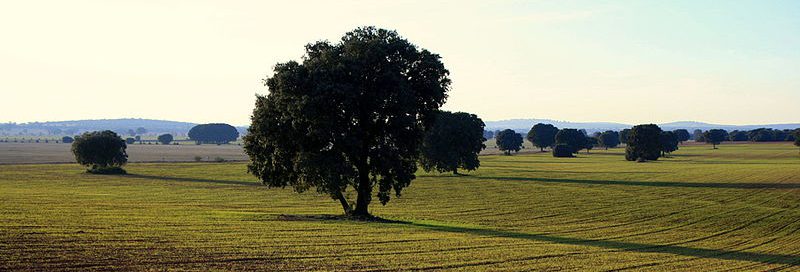With an area of 79,000 square kilometers and more than 460,000 thousand hectares dedicated to vine cultivation, Castilla La Mancha is the largest wine-growing region in the world. Made up of more than 360 municipalities, the cultivation of grapes and wine has become one of the most important economic engines of the region.
Castilla la Mancha is the region in Spain with the largest vineyard area. It is composed of eight appellations of origin: Ucles, Ribera del Jucar, Manchuela, Almansa, Modejar, Valdepeñas, La Mancha and Mentrida, and by several Vinos de Pago, among which Pago Dominio de Valdepusa stands out, where some of the best wines in Spain are produced and are gradually gaining recognition in the markets, positioning themselves as wines of great quality.
During the 1st International Wine Summit, organized by the Community last October, more than 90 wineries in La Mancha opened their doors to visitors so that they could discover their facilities and taste the great wines produced in this region. For this reason, the Community is increasingly betting on wine tourism as one of its main sources of income.
DO La Mancha: The Jewel of Castile
 Located in the central plateau of the Iberian Peninsula, the La Mancha DO is the largest on the planet. With some 30,000 km2 dedicated to vine cultivation, it encompasses 182 municipalities in the provinces of Ciudad Real, Albacete, Toledo and Cuenca, where there are about 280 wineries.
Located in the central plateau of the Iberian Peninsula, the La Mancha DO is the largest on the planet. With some 30,000 km2 dedicated to vine cultivation, it encompasses 182 municipalities in the provinces of Ciudad Real, Albacete, Toledo and Cuenca, where there are about 280 wineries.
Continental climate The extreme temperatures in the region, ranging from -15º in the cold winter and 40º in the hot summer, together with its type of soil, formed by flat land, without great heights and with a beautiful reddish earth as a result of its limestone structure, make of this region an optimal place for vine cultivation and winemaking, which has been perfected from the Middle Ages to the present day, positioning the wines of the appellation in all national and international markets.
Relying on tourism as a source of income, Do La Mancha has been improving and adding establishments dedicated to offering its visitors an unparalleled gastronomic and wine offer. We find a large number of wineries, hotels and other types of establishments dedicated to wine. From wine shops, to restaurants where the pairing of wine and food are the protagonists, to museums and wine therapy centers.
 Among the wineries dedicated to creating a whole experience for the visitor, we find Finca Antigua, in the municipality of Los Hinojosos (Cuenca), which has an area of over 1,000 hectares, 400 of which are dedicated to the cultivation of vines. This winery offers different possibilities for wine tourists, from a tour of the entire estate to a picnic lunch at the foot of the vineyard. An imposing avant-garde winery, where an enotourism center has recently been inaugurated with a dining room for typical Manchegan meals that completes the visit.
Among the wineries dedicated to creating a whole experience for the visitor, we find Finca Antigua, in the municipality of Los Hinojosos (Cuenca), which has an area of over 1,000 hectares, 400 of which are dedicated to the cultivation of vines. This winery offers different possibilities for wine tourists, from a tour of the entire estate to a picnic lunch at the foot of the vineyard. An imposing avant-garde winery, where an enotourism center has recently been inaugurated with a dining room for typical Manchegan meals that completes the visit.
In addition to Finca Antigua, we also find interesting wineries such as
Cesar Velasco
in Villarrobledo, which has a park of centenary jars, or Finca Sandoval in Ledaña and Bodegas Ponce in Villanueva de la Jara.
There is a wide range of gastronomic offer and charming accommodations, from Michelin-starred restaurants in the area, such as
Las Rejas
in Las Pedroñeras (Cuenca),) or
El Bohío
in Illescas (Toledo), to other establishments that offer a gastronomic offer of traditional Manchegan food. Among them, near the archaeological park of Segóbriga in the town of Saelices, Cuenca, is located Houses in LujanCasas de Lujan is a rural and familiar place where the traditional Manchegan cuisine is the absolute protagonist. In addition, Casas de Lujan has a typical Castilian Manchegan decoration, with farm tools and old equipment that makes guests feel at home. On the other hand, with a modernized Manchegan food, we can find the
Saffron Restaurant
in Villarrobledo.
The range of recommended accommodations for a complete weekend in La Mancha goes from a restored castle converted into a rural house in the small village of Villaescusa de Haroalso considered as one of the 50 excellent rural houses in Castilla La Mancha, until the Buenavista Palace in BelmonteThe hotel is an old 16th century building that has been restored and converted into a guesthouse, with a large central courtyard.
And as La Mancha is the land of Don Quixote, you can not finish the wine tourism weekend without visiting El Toboso, a charming village, homeland of the famous Dulcinea, where you can get lost walking through its old streets and typical La Mancha houses. The Cervantino Museum in the Plaza de la Iglesia, Humor Gráfico de Dulcinea, Convento de las Trinitarias, Las Clarisas where you can buy their famous and rich sweets and buy cheese in shepherds’ houses. Here, you can stay in several rural houses, but among them, the most outstanding are
Finca Las Herrerillas
a lodging for groups that can be enjoyed with your family or friends.





